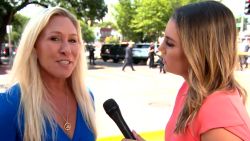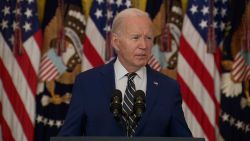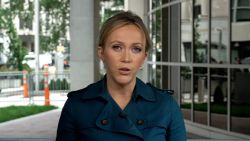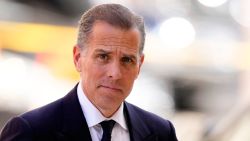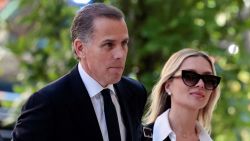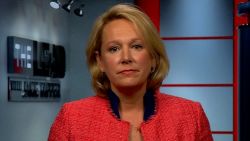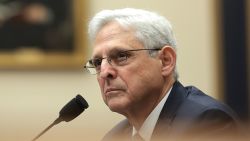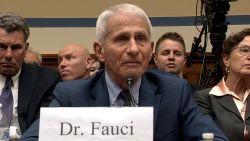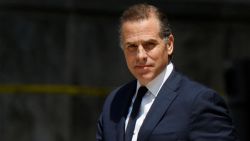After months of identifying their likeliest supporters, the Democratic 2020 contenders are entering a final weekend of door-knocking and phone-banking in Iowa hoping to tip caucus-night turnout in their favor.
The key questions are how many voters will show up Monday night, and how different – younger or older; more liberal or more moderate; more heavily Latino than usual for Iowa – that turnout will look from Democratic caucus-going crowds in 2008 and 2016.
Vermont Sen. Bernie Sanders is betting on turnout that would break 2008’s record of nearly 240,000, growing his progressive base by adding first-time caucus-goers who are younger and heavily Latino.
Former Vice President Joe Biden’s campaign is an older crowd of reliable Democratic voters, with a heavier-than-usual sprinkling of independents and disaffected Republicans. Biden is hoping to turn in strong performances in rural and union-heavy areas. Lower turnout – between 2008 and 2016’s 172,000 – could benefit his campaign.
Massachusetts Sen. Elizabeth Warren and former South Bend, Indiana, Mayor Pete Buttigieg are both hoping for boosts from their best-in-class organizations – with Warren’s travel schedule suggesting she is focused on turning out progressive voters in cities and suburbs, while Buttigieg targets rural areas with disaffected Republicans much like Biden.
Visit CNN’s Election Center for full coverage of the 2020 race
The key drivers of turnout, top Iowa Democrats said, are suburban and college towns: the areas around Des Moines, particularly its fast-growing western portions; and places like Iowa City, the home of the University of Iowa, and Ames, where Iowa State University is located.
Just as important as turnout is who the new voters are. Monmouth University released a poll Thursday showing Biden narrowly ahead of Sanders, 23% to 21%, using a model based on 2008’s turnout. But pollster Patrick Murphy said if caucus-night turnout consists of traditional Democratic voters, Biden’s edge could jump to six points; while Sanders has a four-point lead if the caucus electorate consists more heavily of voters who do not ordinarily participate in primary elections.
“A turnout swing of as few of 10,000 voters could determine who ‘wins’ the caucus if it is driven by a specific demographic group,” Murray said in a statement accompanying the poll’s release.
Iowa Democratic officials have long said they are prepared for turnout to exceed 2008’s record of nearly 240,000.
“It is always hard to predict caucus turnout but we as a party have been prepared for record turnout all along,” said Iowa Democratic Party Chairman Troy Price. “That is why we have big rooms; that is why we have a lot of materials.”
But several leading Democratic campaigns in recent months have revised their turnout expectations downward, saying this year doesn’t match 2008 – a year in which then-Sens. Barack Obama and Hillary Clinton, as well as John Edwards, were all running among the best campaigns the state has ever seen.
Tom Miller, the long-time Iowa attorney general who campaigned with Biden this week, said the record-breaking 2008 caucuses were “unique” – a suggestion that this year won’t replicate its explosion in new voters.
“There’s a pretty good idea of the people that will come” on caucus night this year, Miller said.
Biden’s campaign has focused the former vice president’s travel schedule in the final sprint on rural areas where he hopes independents and disaffected Republicans looking for a moderate Democratic alternative to Trump make up a larger-than-usual share of the electorate.
His campaign is targeting Catholics, military veterans and union members, a Biden aide said, with his travel schedule also focusing on union-heavy eastern Iowa.
Biden’s closing argument has emphasized his electability, highlighting how he has withstood attacks from Republicans defending President Donald Trump amid impeachment proceedings on Capitol Hill. He has campaigned with Iowa Reps. Abby Finkenauer and Cindy Axne, two first-term Democrats who won previously Republican-held seats – an effort to demonstrate that Biden could help down-ballot Democrats.
Other candidates are also targeting suburban and rural voters, expecting those portions of the electorate to be more moderate.
Minnesota Sen. Amy Klobuchar’s campaign is expecting turnout around 2008 levels – down from the record-breaking numbers it had previously expected, according to a source familiar with the campaign’s thinking. The source said Klobuchar’s campaign believes the record could be broken, but not by much.
Buttigieg’s campaign believes turnout will be in the 2008 range, between 210,000 and 240,000, according to a source familiar with the campaign’s strategy.
“In the more suburban and rural area, if there are significant chunks of new caucus-goers showing up, that is very positive for us,” the source said.
One measure campaigns will be watching closely is the age of the caucus-going electorate. In 2016, 28% of Iowa caucus-goers were 65 or older, entrance polls showed. If that number climbs, it would likely benefit Biden, who has consistently drawn older audiences at his campaign events and polls better with older voters. If the 18% of voters between 17 and 29 jumps, it would likely benefit Sanders.
More progressive candidates, like Sanders and Warren, are banking on higher turnout.
“If there’s a huge voter turnout, you can turn off your TV – Bernie won,” Sanders spokesman Mike Casca said.
Sanders and his estimable volunteer army have been working since early on in the primary to expand the electorate in Iowa, with a particular focus on Latino communities around the state, which tend to skew younger – and, the campaign believes, toward Sanders if they come out in higher proportions on Monday.
The caucuses will also provide the first live-fire verdict on the effectiveness of the campaign’s “BERN app,” a digital organizing tool used by organizers and volunteers to help them identify and target potential supporters. Early indications suggest it has helped facilitate the kind of peer-to-peer engagement the campaign encourages. Top staff recently decided to ask some supporters who had been making dialing from out of state to redirect their energies to other primary hotspots around the country, or their own neighborhoods, because of an oversaturation of calls into Iowa.
On the stump, Sanders has been banging the turnout drum in speeches and talks around the state. Last weekend, during a brief break from Trump’s impeachment trial, he warned supporters against becoming complacent in the final stretch.
“There was a poll that came out today that had us all of one point in the lead. That tells me this is going to be a very, very tight election,” Sanders said in Ames. “And it tells me that the candidate will win, which campaign has the best get out the vote effort. Polls are one thing, getting out the vote is something else.”
Sanders added: “If there is a large voter turnout – if working people and young people come out in large numbers – we will win and win big.”
Warren is banking on what a number of Iowa-wise operatives and elected officials have long viewed as her best-in-class ground game to deliver what would, in light of recent polling, be an upset victory Monday.
In an interview with former Obama campaign manager David Plouffe on his “Campaign HQ” podcast last year, Beto O’Rourke’s former campaign manager Jen O’Malley Dillon, also an Obama campaign veteran, singled out Warren’s Iowa operation.
“I have been really impressed by the organization that Elizabeth Warren has built on the ground,” O’Malley Dillon said. “Her team (in Iowa) is very strong. They’re just doing the work every day, and I think that that’s just been apparent from the start.”
In a call with this week hosted by the Progressive Change Campaign Committee, Iowa State Sen. Zach Wahls, who endorsed Warren in October, described what her winning coalition might look like.
“I think that the fact that she is able to energize some of those outsider or progressive folks who may not be traditional caucus goers, plus have that strong crossover appeal with folks who are kind of the more standard Iowa caucus goer, I think is what gives her that ability to unite the party to both win the caucuses and to unite the party in November,” Wahls said.





